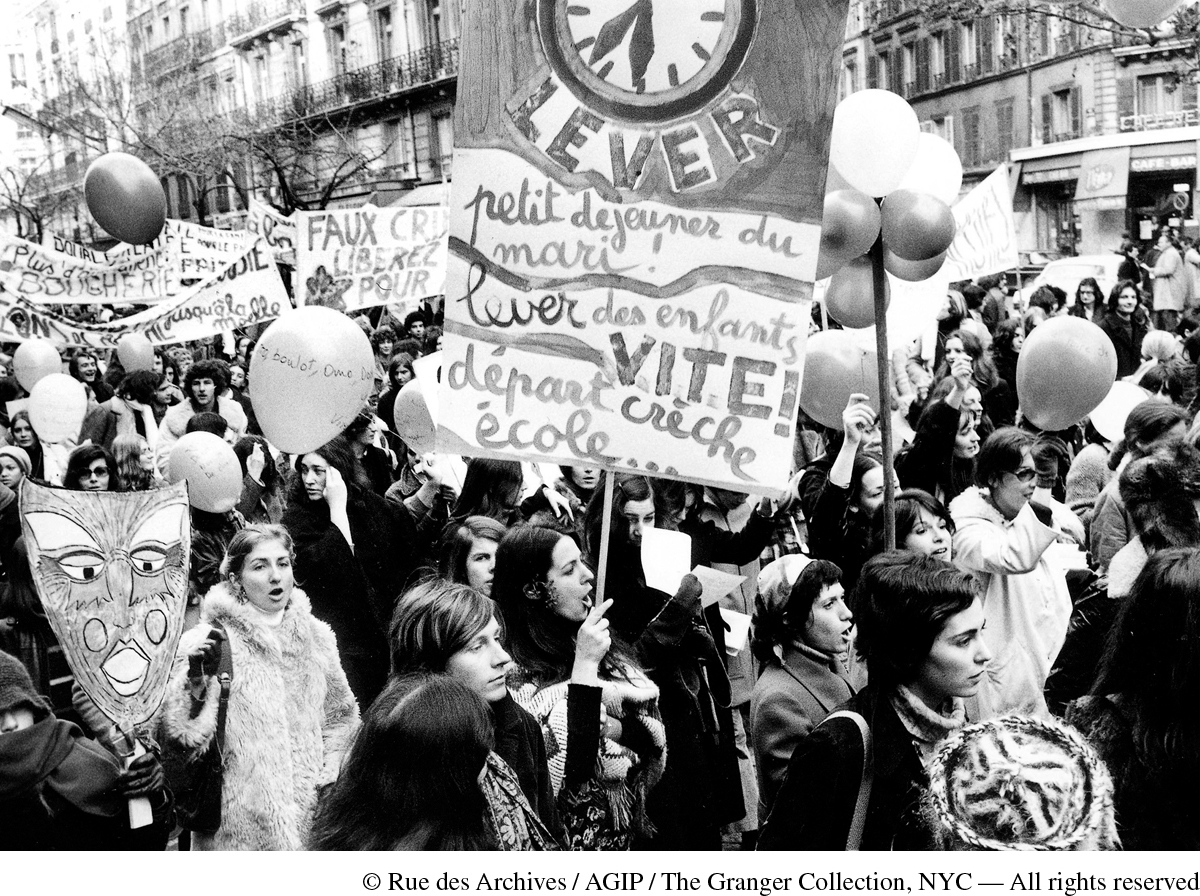The Growth of Citizen Activism
Printed Page 952
Important EventsThe Growth of Citizen Activism
In the midst of cold war conflict and technological advance, a new activism emerged. Prosperity and the rising benefits of a postindustrial, service-oriented economy made people ever more eager for peace and justice. The U.S. civil rights movement broadened as other minorities joined African Americans in demanding fair treatment. In 1965, César Chávez (1927–1993) led Mexican American migrant workers in the California grape agribusiness to strike for better wages and working conditions. Meanwhile, beginning that same year, urban riots erupted across the United States out of African Americans’ frustration in their struggle for equal rights. Some chose to celebrate their race under the banner “black is beautiful,” and some urged a push for “black power” to reclaim rights forcefully instead of “begging” for them nonviolently. Separatism, not integration, became the goal of others. Small cadres of militants like the Black Panthers took up arms, believing that, like decolonizing peoples elsewhere, they needed to protect themselves against the violent whites around them.
From the 1950s on, homosexuals had also lobbied for the decriminalization of their sexual lives and practices. Some anti-gay propaganda equated male homosexuality with a lack of militaristic manliness needed to protect the nation-state on either side of the cold war divide. In June 1969, gay men in the Stonewall area of Greenwich Village, New York, rioted against the police and more general persecution, as had African Americans, both to assert their civil rights and to affirm their identity. The gay liberation movement born in that time came to span the globe and to include not only men but gay women, too.
As a result of the new turn in black efforts for change, white American university students who had participated in the early stages of the civil rights movement found themselves excluded from leadership positions in favor of an exclusively black leadership. Many white students soon joined the swelling protests against technological change, consumerism, and the Vietnam War. European youth were also feverish for reform. In 1966, Prague students, chanting “The only good Communist is a dead one,” held carnival-like processions to commemorate the tenth anniversary of the 1956 Hungarian uprisings. The “situationists” in France used shocking graffiti and street theater to call on students to wake up from the slumbering pace of consumer society.
Throughout the 1960s, students criticized the traditional university curriculum and flaunted their own countercultural values. They questioned how studying Plato or Dante would help them after graduation. “How to Train Stuffed Geese” was French students’ satirical version of the teaching methods inflicted on them. Long hair, communal living, scorn for personal cleanliness, and ridicule for sexual chastity were part of students’ rejection of middle-class values. Widespread use of the pill and open promiscuity made the sexual revolution explicit and public. Marijuana use became common among students, who had their own rituals, music, and gathering places. Hated by students, big business nonetheless made billions of dollars by selling everything from blue jeans to natural foods as well as by managing the rock stars of the counterculture.
Women’s activism erupted, too. Working for reproductive rights, women in France helped end the nation’s ban on birth control in 1965. Middle-class women eagerly responded to the international best seller The Feminine Mystique (1963), by American journalist Betty Friedan. Pointing to the stagnating talents of many housewives, Friedan helped organize the National Organization for Women (NOW) in 1966 “to bring women into full participation in the mainstream of American society now.” NOW advocated equal pay for equal work and a variety of other legal and economic reforms. In Sweden, women lobbied to make tasks both at home and in the workplace less gender-segregated.

Women who engaged in the civil rights and student movements soon realized that many protest organizations devalued women just as society at large did. Male activists adopted the leather-jacketed machismo style of their film and rock heroes, but women in the movements were often judged by the status of their male protester lovers. “A woman was to ‘inspire’ her man,” African American activist Angela Davis complained, adding that women seeking equality were accused of wanting “to rob [male activists] of their manhood.” West German women students tossed tomatoes at male protest leaders in defiance of male domination of the movement and of standards set by society for ladylike behavior.